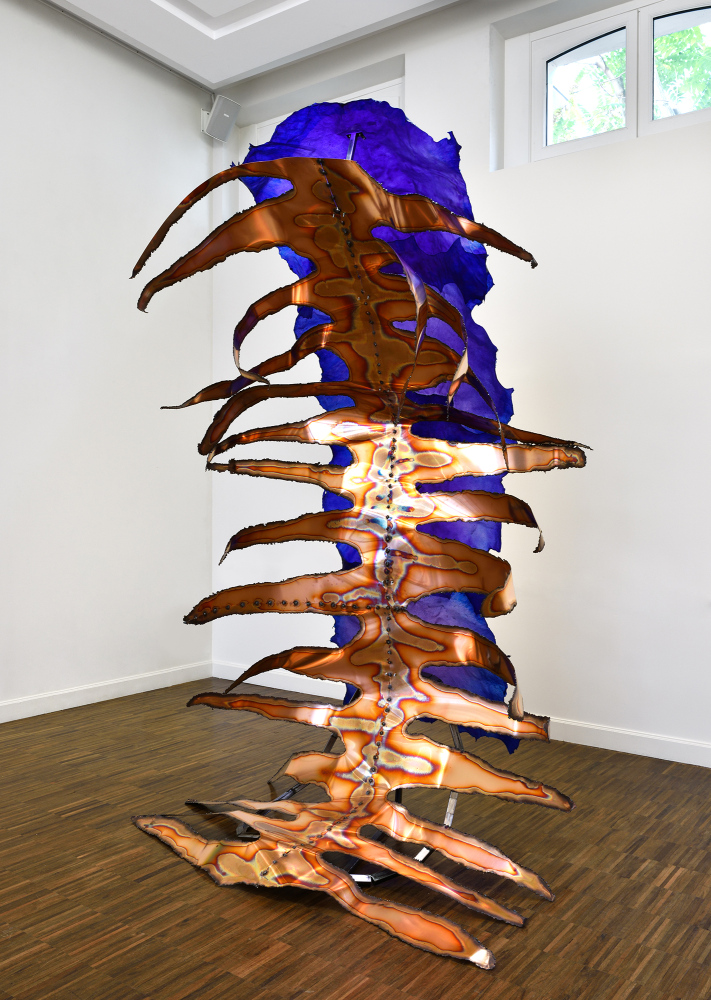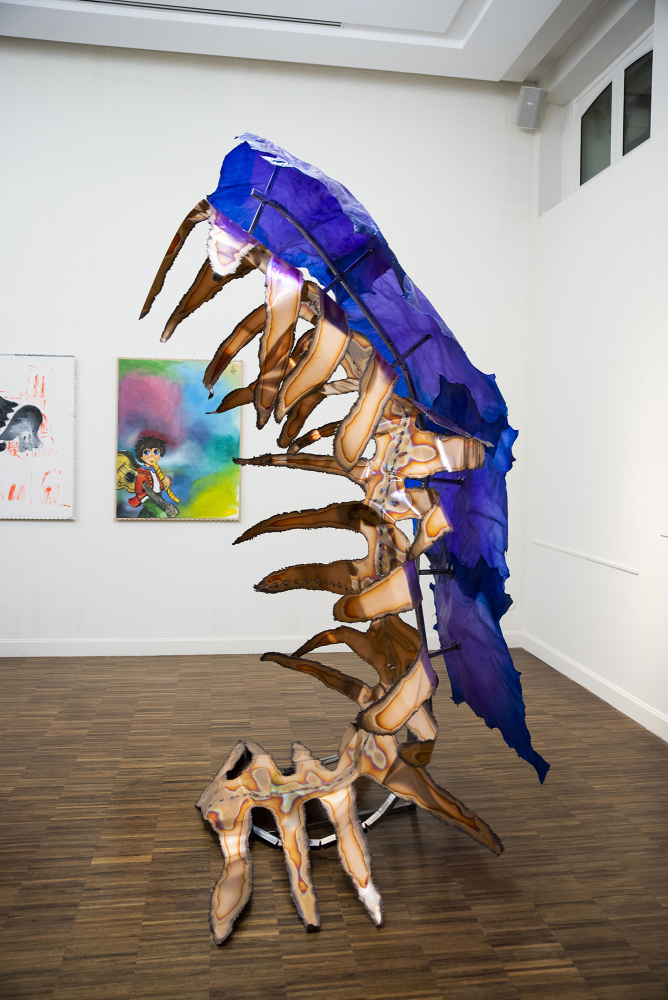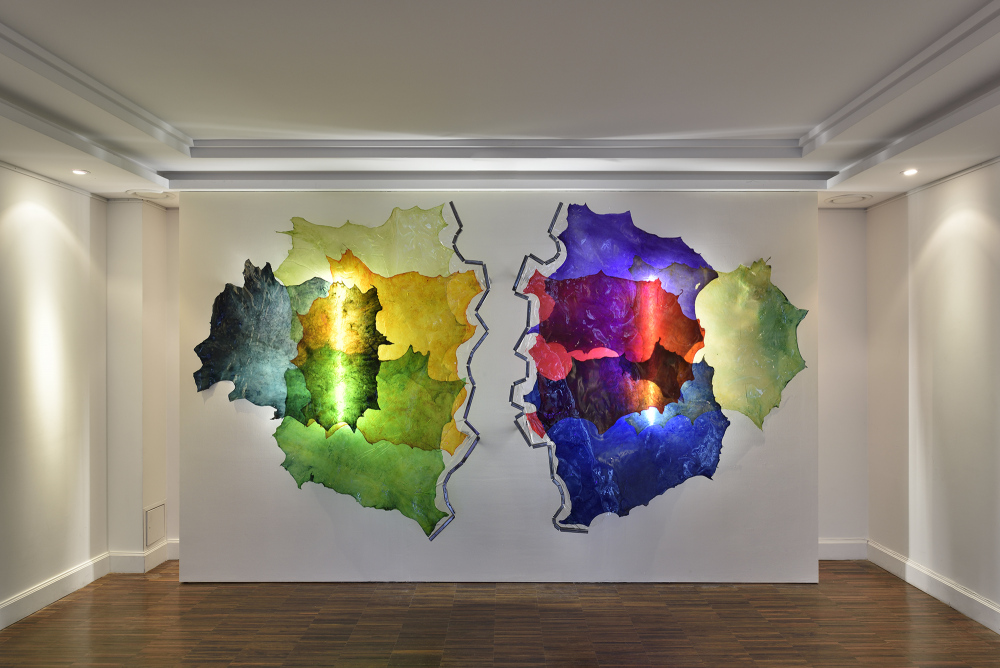-

-
-
(FR)
Révélations Emerige - 2018
Currator : Gaël Charbau
Sonder la matière, l’amincir, jusqu’à mettre à jour les stigmates de son histoire, les inscriptions qui témoignent de sa relation au monde, de sa relation à la main de l’artiste en constante négociation, avec elle. Tissus délavés, cuirs translucides, lames de métaux brûlés... Les sculptures d’Amandine Guruceaga sont le résultat d’alchimies en quête d’états limites de matériaux ordinaires. C’est alors sous la figure tutélaire de l’étrange et de l’étranger qu’ils reviennent investir notre espace, pour nous poser leurs énigmes, renouvelées.
Amandine Guruceaga a commencé par travailler le wax, ce tissu africain originellement développé par les colons afin d’en faire commerce, le décolorant afin de faire apparaître les « réactions » de la matière, les motifs qui par endroits disparaissent ou, au contraire, persistent. Elle a depuis produit des séries de cuirs translucides tels des vitraux – résultat obtenu à l’issue d’une résidence à la tannerie Riba Guixà. Sur ces peaux apparaissent les veines, ossatures et cicatrices de l’animal, vergetures que favorise l’élevage intensif dont il a fait l’objet. « L’histoire est inscrite dans la matière », souligne l’artiste. Amandine Guruceaga, dans un geste d’abord de révélation, de soin, la déplace. Là, des peaux aux teintes chlorophylle, prises dans leurs caissons lumineux comme entre les lamelles d’un biologiste, semble proposer une synthèse de l’ordre organique, animal et végétal (série Myth Tartar, 2017). Ici, les multiples couleurs d’un patchwork de cuirs se superposent au centre de la composition, avant de se déployer autour de ce vortex centrifuge : elles entrent en relation, comme sur la palette du peintre (Acid Mix Pergamine I, 2017).
« La relation, c’est notre manière de se changer en échangeant avec l’autre, sans se perdre, ni se dénaturer », a déclaré l’auteur et philosophe Édouard Glissant, souvent cité, à raison, face au travail d’Amandine Guruceaga. Sa sculpture Su lengua afilada (2017) agence ainsi un pan de cuir transparent et une fine languette d’acier aux contours inégaux et moirés brûlés par la flamme d’un chalumeau – autre exercice que l’artiste affectionne – qui lui sert de support. Une esthétique tout en contrastes, entre massivité et instabilité, tranchant et fragilité. On pense alors au troisième lieu qu’est l’intime, selon le philosophe François Jullien, cet au-delà indéfinissable où se constitue la rencontre, irréductible aux identités qui la composent. De même, le travail d’Amandine Guruceaga semble se jouer des frontières, entre peinture et sculpture, entre art et artisanat.Marine Relinger
-

The Tear, 2018, entrefino lamb skins, approx. 300x180x180cm, exhibition views Outside Our, Emerige Revelations, Villa Emerige.
La déchirure, 2018, peaux d'agneau entrefino, approx.300x180x180cm, vues d'exposition Outside Our, Révelations Emerige, Villa Emerige.
© Jean Picon et © Rebecca Fanuele
-

Acid Mix Pergamine III and Acid Mix Pergamine IV, 2018, metal, resin, transparent entrefino lamb skins, approx. 180x180x3cm.
Acid Mix Pergamine III et Acid Mix Pergamine IV, 2018, métal, résine, peaux d’agneau entrefino transparantes, approx. 180x180x3cm.
© Photo: Rebecca Fanuele et Frédéric Clad / The Farm ( pour le détail )